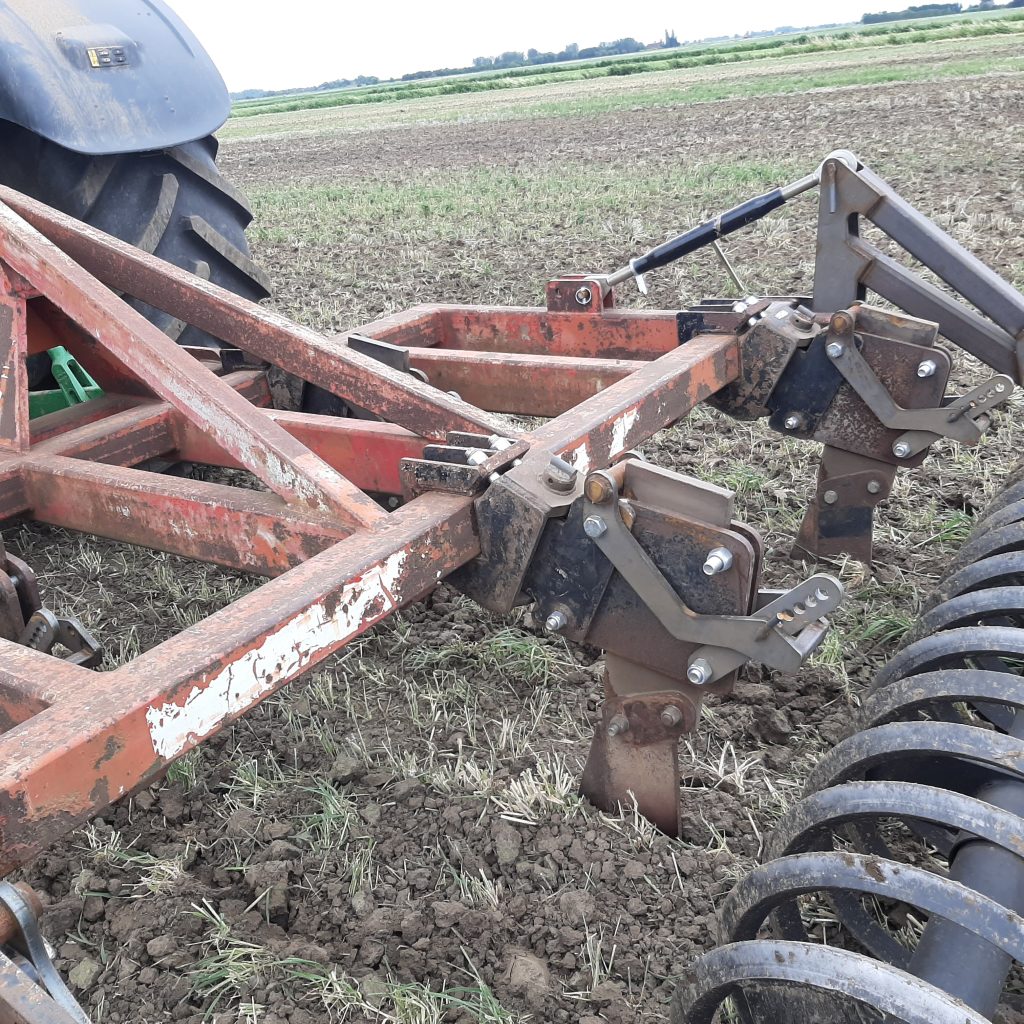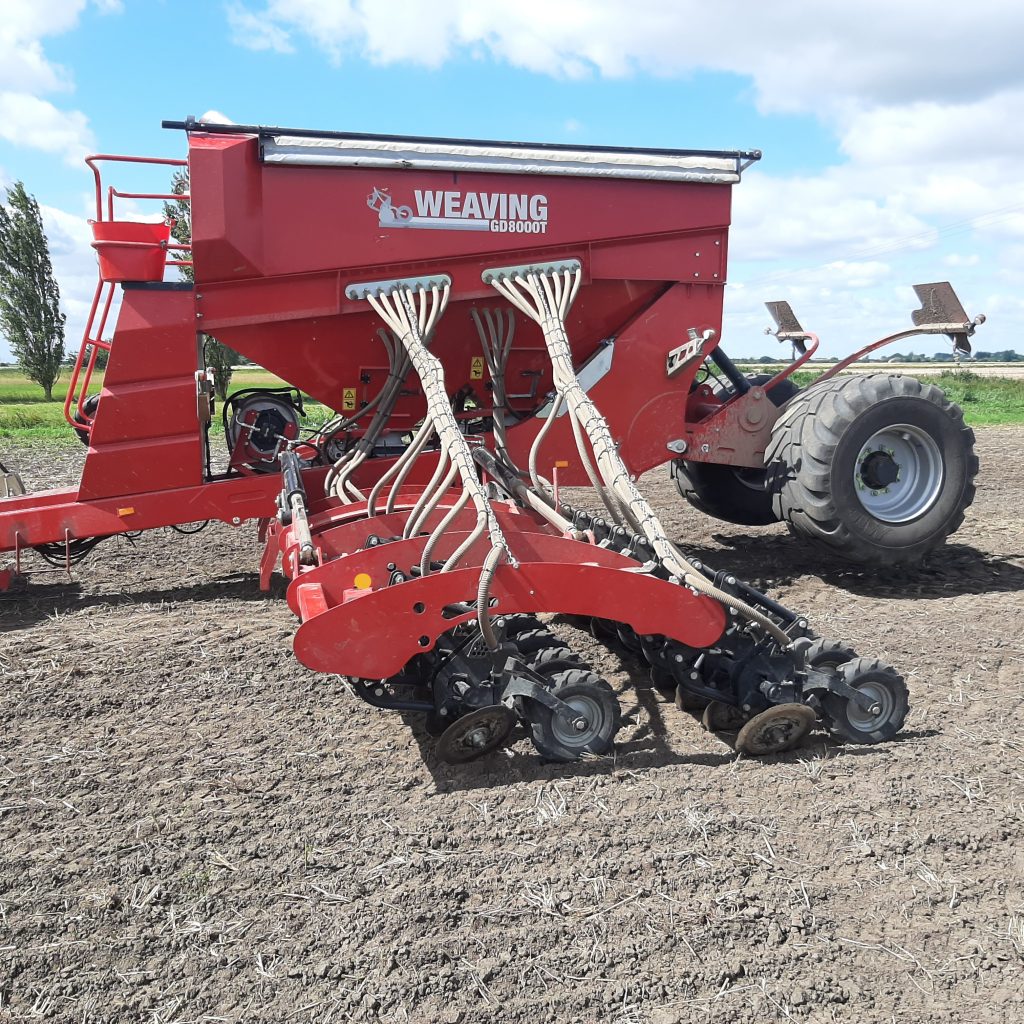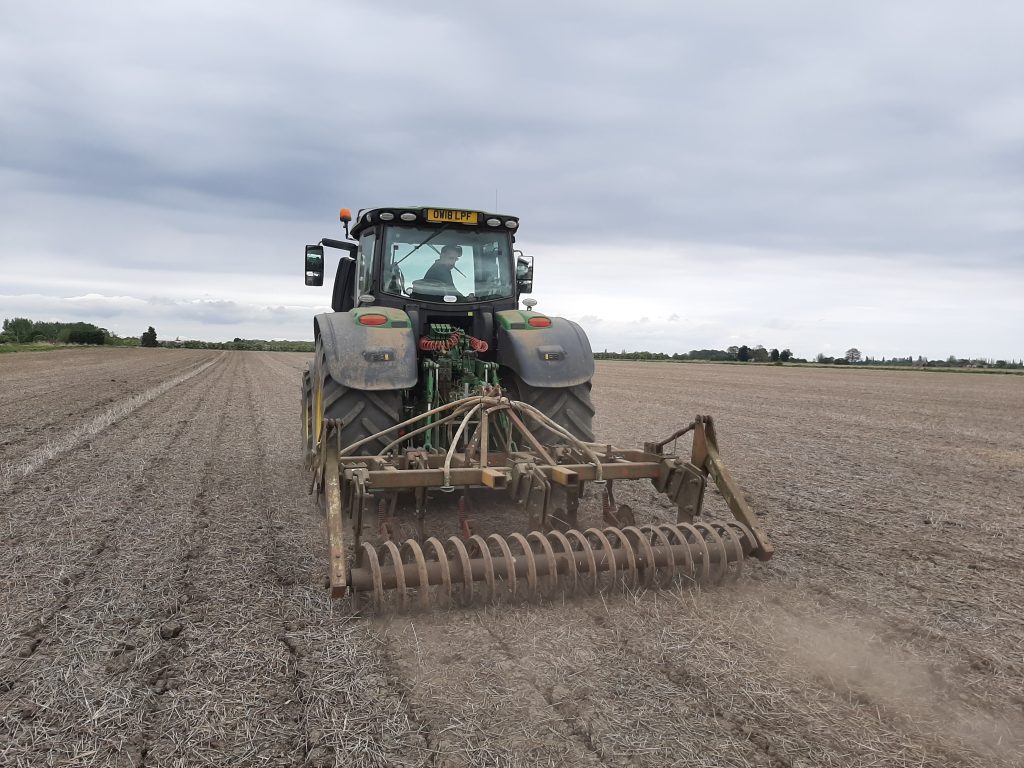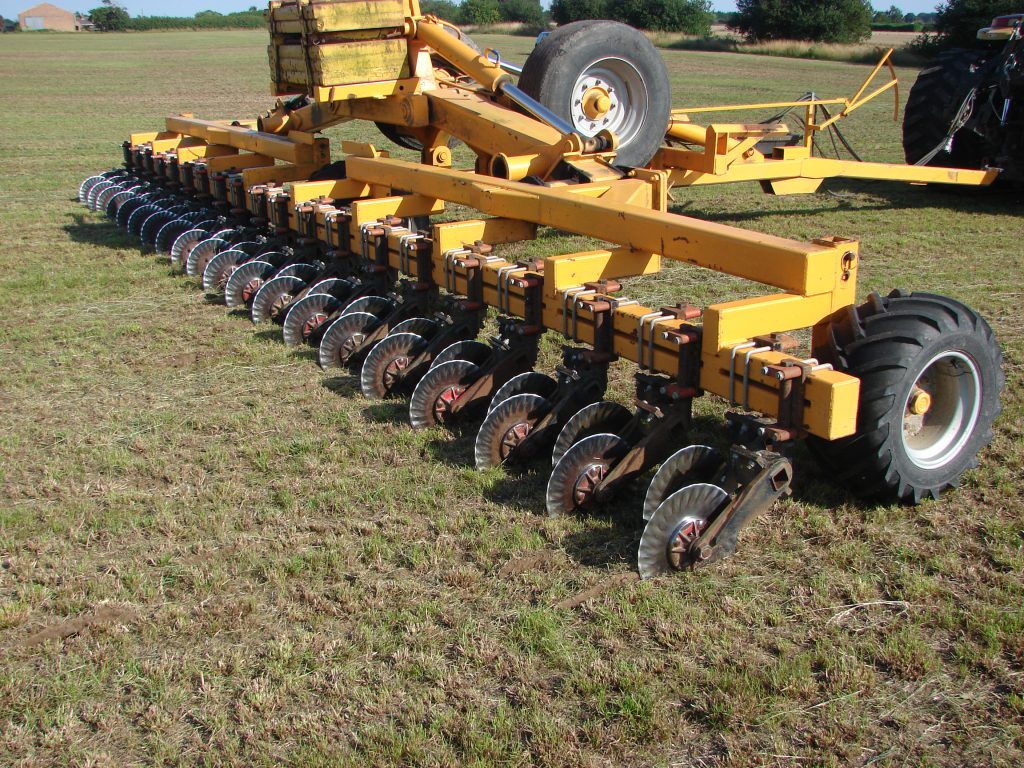Written by Tony Gent
It doesn’t work if just removing some elements of what you are doing now and leave others in is “OK I’m doing less”.
A couple of articles caught my interest in the July additional of this magazine, first What’s Your Colour written by James Warne and Farmer Focus by Andrew Ward. The theme of both is somewhat similar in questionable understanding the principle of how soil degradation works and putting in place appropriate practice to start a sequence of improving organic matter and resulting biology.
Since the evolvement of tillage mainly to establish a single species crop with reduce competition from other species – a weed, mass food production evolved highly successfully. What we now understand is that success was based on what some compared to mining products from the soil. The way soil evolved over millions of years to work before man’s intervention vegetation growth and subsequent die back were in balance so organic carbon, fertility and nutrition release were at the same rate with no artificial soil movement taking place.
When soil fertility is naturally high soil movement results in robust crops due to the cultivation induced increased rate of nutrition release. This is particularly so as soil movement technology gets more and more aggressive particularly with development of inversion tillage such as the plough. What we now have as a result of cultivation causing instance of retention and release is soil which is out of balance with its biology resulting in degradation or as we say total mining of the soil-based resource.
The dilemma so many farmers are faced with, with soil in this situation is putting in place practices that turn the corner towards restoration of biology and protecting the short-term risk as they see it to the income stream from the farm. Also, judgement and assessment of what’s happening can become massively clouded and confusing with reduced soil movement reducing artificial soil structural correction, but which still compromises natural biological build up.

Particularly farmers with heavily degraded soil that has been vigorously attacked with more and more power and forced soil manipulating technology for timelier establishment and finer seed beds. The awareness of what other farmers have achieved in a No-Till position where they are growing very respectable cost-effective crops doing nothing. Their thought process is all too often that’s ok but I think there is an opportunity to do less, but if I continue to do something it’s got to be better than doing nothing. We have learned that again particularly with heavily degraded soil that logic is partly correct, but it must be applied from a different standpoint. It doesn’t work if just removing some elements of what you are doing now and leave others in is “OK I’m doing less”. The problem is that what you were doing even with so-called min-till had an element of primary tillage or initial soil breaking in it, followed by seedbed preparation either prior to drilling or in conjunction with drilling. The problem as I have described is often a bad compromise first not achieving carrying soil along in its degraded state or doing a suitable operation to not compromise biology recovery and so just bumping along in the tough of doing neither of artificially doing natures job completely or treating the soil correctly to allow biology to recover and the soil and moving to a point of soil largely looking after itself as nature intended.
The first absolute rule in all this is do nothing if it is not needed and then only in suitable weather and rotational situations and opportunity. Also experience has shown us that grass related crops such as cereals have much stronger rooting than many break crops and usually tolerate heavily degraded soil with little or no loss of yield, so long as establishment is robust and there are no compaction or drainage issues. Break crops such as oil seed rape and beans though are weaker rooting and soon show their dislike to less than reasonable soil structure.
When you stop tillage of degraded soil so long as the previous crop and this is by far the best way to judge the structural state of a field was robust and suffered no signs of compaction or drainage problems and no severe damage was done to the soil removing the previous crop, then it’s completely rational to expect if its grown one successful robust crop why shouldn’t it grow another one, without any interference with the soil. With the first year or two of No-Till that’s usually the case. But after that an element of weather luck and rotational circumstances creep in. The soil starts to forget the artificial structuring help you have been giving it and as I have said is yet to be at the stage to compensate for this. In practice and this is where weather luck starts to play a part usually with our maritime climate a wet sowing period compromises crop establishment and results in a less than ideal robust crop. Because soil recovery relies on the soil being active and full of roots and activity,



We have found the approach to the doing something to help for us has been low disturbance vertical tillage. With us there are two stages to this – repair and get soil going in the right direction and the much more laid-back simple rotation opportunistic rotational maintenance, of which as biology increases you need less and less. Very important you must not confuse soil hard or firmness with soil compaction – soil is naturally hard or firm, particularly in dryer conditions, but with the honeycomb built up as biology is restored firmness is not a problem. The big big misconception is trying replicate this structure with cultivation, it does not work like that. The more you cultivate the soil structural the weaker it becomes and wet and dry conditions and trafficking it just slumps together into one big hard lump or slush, and the cycle of obliterating it with cultivation must begin again. Also worms and microbes have no chance in this cycle of obliteration to slump.
Methods of establishment also plays a part in this with a fixed tine or disc approach. Tines range from the type that moves all or most of soil creating an affect that’s basically one pass cultivation and obviously compromises massively No-till and biology recovery to a very narrow low disturbance tine which is much better, but most still have some element of disruption and inversion effect on the soil. All tines have the disadvantage of blockage in residue, especially in cover crops. Discs generally have much lower surface disturbance and are much better at handling residue and as with tines there are various different approaches to design. The main difference is that most create the opening by displacement of the soil sideways soil against soil, which results in compression soil damage and smear in wet conditions that is synonymous with most design limitations. An under-cut disc such as the Weaving GD is much kinder to the soil as there is little or no sideways movement and the opening is created with a natural sleight upwards action, resulting in minimal disturbance and pressure on the soil allowing the seed to be placed under the tilth. Soil friction is generally less than a tine because the disc rotates with the soil flow, resulting in less pressure needed to firm the soil around the seed leading to reduced shrinkage and slot opening, also the seed is predominantly placed to the side away from the primary cut therefore generally slightly away from any hair pinned residue.

Recently the theory of cover cops has come to the forefront, which is great, and no doubt could help with particularly the transition enormously, but the practicality has many challenges, particularly with the establishment window. As I write – ok its early and we have plenty of time and opportunity, but no moisture and as we have seen with small seed crops if you put them in the ground and they don’t immediately grow they lose vigour and often are a complete failure, even when it does eventually rain. Wet seasons often are cold and late also which compromises establishment before the autumn growing period tails of into winter. Also, with a later harvest workload becomes a compromise and cash crops must take precedence.
By all means embrace no-till, especially to address soil degradation and make sure your methods facilitate an improvement in soil biology. This is absolutely vital to allow the soil to recover, some appropriate help maybe needed to win in the long term, together with a little patience.




